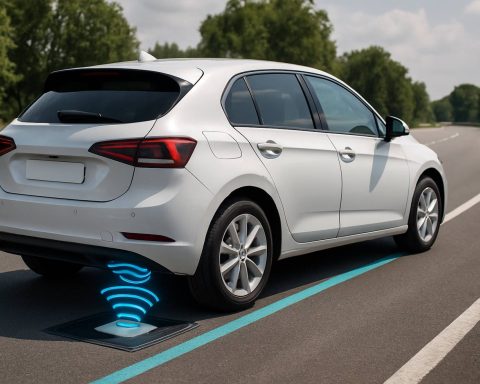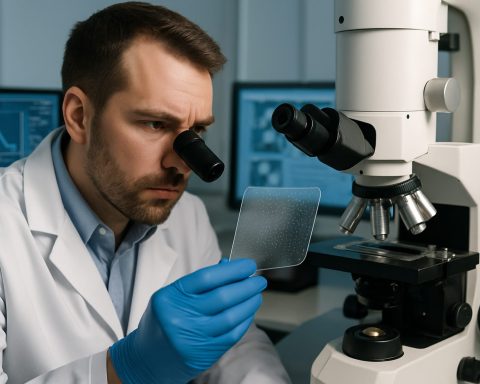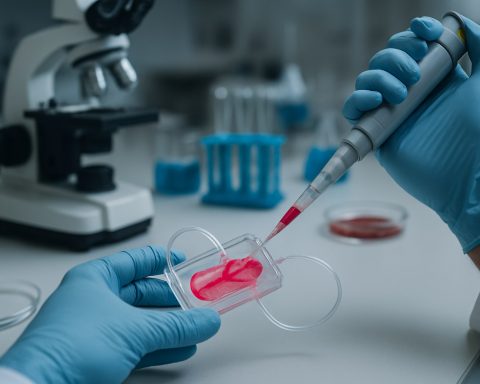- South Korean researchers have developed a new anode material that can significantly reduce EV charging times to about 20 minutes, while also extending battery life.
- The innovative anode uses hard carbon with small amounts of tin, enhancing charging speed and energy density compared to traditional graphite anodes.
- This material allows for over 1,500 rapid recharge cycles, ensuring long-lasting performance for EV batteries.
- The new technology boosts energy density by 1.5 times over traditional graphite, resulting in longer driving ranges for EVs.
- Besides lithium-ion batteries, the new anode is effective for sodium-ion batteries, making it a promising option for more sustainable and cost-effective energy storage solutions.
- The advancement paves the way for EV charging to be as quick and convenient as refueling gasoline vehicles, marking significant progress in battery technology.
In the relentless quest to make electric vehicles (EVs) as convenient as their gasoline-powered counterparts, a cohort of intrepid researchers from South Korea is charting a promising new path. Their innovation: an anode that could render EV charging a brief intermission rather than a protracted pause, slicing charge times down to a mere 20 minutes while dramatically extending battery life.
Imagine the scene: an EV driver pulling into a charging station, grabbing a cup of coffee, only to find their car ready to hit the road again before they’ve sipped it. Thanks to a breakthrough by the collaborative minds at POSTECH and the Korea Institute of Energy Research, this vision edges closer to reality with each passing day. Their pioneering work with a new anode material addresses two pressing challenges in battery technology—charging speed and longevity.
The Most Significant Change Since Graphite
Traditional lithium-ion batteries, those ubiquitous powerhouses underpinning the tech in our pockets and garages, have relied heavily on graphite anodes. Despite their widespread use, graphite struggles with slow charging times and energy density limitations, slowing the march of progress for EVs and other energy storage solutions.
Enter hard carbon paired with minuscule quantities of tin. Known for its porous nature, hard carbon strikes down the usual barriers, allowing lithium ions—the lifeblood of batteries—to channel their way rapidly to power vehicles at optimal speed. Tin, although a powerhouse of energy storage, traditionally faltered due to swelling and degradation within batteries. Yet, this research team has brilliantly maneuvered around this obstacle using a sol-gel process, stabilizing tin within the carbon matrix. This technique not only mitigates swelling but creates a symbiotic relationship where tin amplifies the hard carbon’s capabilities while adding additional energy storage capacity.
An Enduring Solution
Initial tests portray a compelling story of durability and efficiency. Batteries harnessing this ingeniously crafted anode promise to endure over 1,500 rapid recharge cycles—translating to several years of reliable performance for the average EV owner. Moreover, these batteries flaunt a 1.5 times higher energy density compared to their graphite-utilizing predecessors, pointing to longer drives and more time spent exploring rather than waiting for a recharge.
Beyond Lithium: A Broad Horizon
The advantages stretch beyond just lithium-ion cells. Sodium-ion batteries (SIBs), eyed as a cost-effective and sustainable alternative, stand to benefit considerably. Traditional anode materials like graphite show reluctance in sodium environments, but the hard carbon-tin concoction stands its ground, maintaining stability and efficient operation, thereby broadening the applicability of this invention across different battery platforms.
In this ambitious leap forward, battery technology might finally meet the expectations of a rapidly electrifying world. Although more hurdles remain, with scaling up production one of them, the advances herald a day when refueling an EV rivals the convenience of traditional gas pumps, reconnecting us with the idea that progress isn’t just an aspiration, but an achievable reality.
Revolutionizing EV Charging: How New Anode Technology Might Change the Game
Overview of New EV Battery Technology
The recent breakthrough in anode technology from researchers at POSTECH and the Korea Institute of Energy Research is set to transform the electric vehicle (EV) landscape. By incorporating a novel combination of hard carbon and tin, they promise to slash EV charging times to just 20 minutes and dramatically enhance battery longevity.
Key Innovations and Features
1. Hard Carbon and Tin Anodes: Traditional graphite anodes face limitations, especially with charging speed and energy density. The introduction of hard carbon, coupled with small amounts of tin, addresses these challenges. The porous nature of hard carbon facilitates the rapid movement of lithium ions, while tin increases energy storage capacity.
2. Sol-gel Process: To stabilize tin within the carbon matrix, researchers used a sol-gel process to effectively control swelling and degradation, ensuring the anode’s reliability and performance.
3. Increased Energy Density: The new anode offers a 1.5 times higher energy density than traditional graphite models, leading to longer ranges and reduced charging frequency.
4. Improved Battery Lifespan: Capable of enduring over 1,500 recharge cycles, these batteries promise several years of constant use, enhancing the value and reliability of EVs.
Benefits for Sodium-Ion Batteries
Beyond lithium-ion batteries, this technology is advantageous for sodium-ion batteries (SIBs). Traditionally hindered by challenges with graphite anodes, SIBs benefit from the durable performance of the hard carbon-tin blend, paving the way for cost-effective and sustainable battery solutions.
Market and Industry Impact
As EV adoption continues to grow, the potential to reduce charging times and extend battery life addresses consumer concerns, fostering greater acceptance of electric vehicles. According to McKinsey, the global EV market is projected to reach over $800 billion by 2027, and innovations like this can accelerate growth by improving infrastructure efficiency and consumer satisfaction.
Controversies and Limitations
Despite its promise, scaling up production poses significant challenges. The sol-gel process and material sourcing must be viable on a large scale to achieve widespread adoption. Additionally, cost factors and commercial feasibility will dictate how quickly this technology can penetrate the market.
How-To Steps for Implementing the Technology
1. Research and Development: Additional R&D is required to optimize the sol-gel process for mass production.
2. Scaling Up: Develop commercial manufacturing methods that address cost and material sourcing issues.
3. Prototype Testing: Conduct extensive real-world testing in different EV models to validate the performance and reliability of these batteries.
4. Collaborative Partnerships: Collaborate with battery manufacturers and automotive companies to facilitate the deployment of these new batteries.
5. Regulatory Approvals: Ensure compliance with safety and environmental regulations before entering the market.
Quick Tips for Consumers
– Stay informed about upcoming EV battery innovations which could significantly reduce charging times.
– Evaluate future EV purchases based on advancements in battery life and charging efficiency.
– Anticipate a greater choice of EV models as battery technology evolves, offering improved energy densities and longer ranges.
Conclusion
The development of new anode technology for EV batteries holds the potential to revolutionize the way we charge and use electric vehicles. By enhancing performance while reducing charging times, this innovation addresses key barriers to EV adoption. As the industry continues to evolve, staying abreast of technological advancements will ensure consumers make informed decisions when considering an electric future.
For more insights on sustainable energy solutions, visit POSTECH and Korea Institute of Energy Research.












